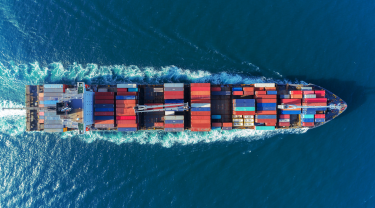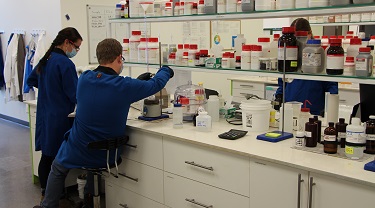Doing business internationally is becoming an increasingly risky business for Canadian companies.
The challenges facing businesses, specifically in the areas of country, political, cyber, financial and supply chain risks, have been increasing steadily the past few years and appear to have reached new heights in 2018.
According to advisory firm BDO Canada’s most recent Global Risk Landscape report, barriers to trade, changes in technology, political alignments as well as the environment have created an unprecedented atmosphere today for managing risk.
“The pace of change, triggered by changes in demand and environment, has caught many business leaders by surprise, threatening their very existence,” states the 2018 report, that compiled responses from more than 500 senior executives across the globe. “Over the past three years, our Global Risk Landscape reports have found that competition and an increasingly tough trading environment have squeezed margins so tight on existing business models that something had to give.”
And that something is the traditional way of doing business, now moving toward new thinking around risk management.
“As risk increases, the business environment has begun to transform from one of longstanding brands based on physical infrastructure to increasingly incorporating a new set of players that are more flexible in a physical and commercial sense,” the report adds.
The biggest areas of change from last year’s report are supply chain and environmental risk. The impending withdrawal of the U.K. from the European Union, the renegotiation of NAFTA and the addition of new tariffs by the U.S., are creating new tensions and uncertainty in supply chains. So is the impact of major climate-related events.
The overall risk landscape is also exacerbated by the pace of technological change and the move to a technology connected world including the Internet of Things (IoT).
“What was new this year (in the survey) was just how much the change in the technology is creating strategic risks for companies,” says David Prime, BDO National RAS Partner. “It's really starting to come to fruition in a lot in industries that things are changing and that you really need understand the impact on your business in terms of where things are going. The shifts in technology are creating strategic risks for all businesses.”
For example, supply chains are more integrated and technologically connected, leaving more opportunities for weak links and disruption from cyber attacks that can pose major ripple effects.
According to a 2018 survey of approximately 500 Canadian manufacturers, the growing risk of cyber attacks aimed at industrial targets is only a medium concern for most executives (45%). Less than half are very prepared for a variety of attacks, 25% are unprepared for targeted external attacks and just 21% are prepped for breaches through a third-party vendor.
As the digital age revolutionizes manufacturing and supply chains, it’s imperative to mitigate those risks.
“Once you install digital technology you must protect your company,” says Sunil Chand, Director of Cybersecurity, Grant Thornton LLP. “Using Industry 4.0 or any network to automate production provides manufacturers with tremendous opportunities. But understand the technology can pivot. The company could then be open to competitors or malware that could damage the company’s systems. The costs could be astronomical if it affects production.”
Since the Great Recession that ended in 2009, services have been driving the Canadian economy. In fact, the services industry employs four out of five Canadians and the past 12 years, 60% of Canada’s fastest-growing exports were services.
Exporting services can be more difficult and risky in comparison to products, because they are intangible whereas physical products can be touched, tested and compared.
Again, international success relies on understanding the global risk landscape.
“Whether it's trade barriers or variances in employment levels, I think trying to understand what’s going on in different markets can be intimidating for a lot of Canadian SMEs,” says Brandon Bignell, Senior Risk Manager at BDO. “They see this big world out there and may be scared away from it. Just because there’s risk, doesn’t mean you shouldn’t do it. You just need to gain that understanding of what the risks are.
Innovative companies are better equipped to manage risks, says the BDO report.
“Businesses that demonstrate agility are typically also those tackling risks imposed by the wider environment. They do not have to fear the capabilities of their rivals, and instead are focused on the dynamics that exist beyond the scope of their competition that nevertheless determine the viability of a business,” it states.
According to an EDC eBook on innovation, innovation can take many forms, but in today’s competitive economy it’s about solving a solution for a customer.
“Price is an important factor for consumers. But Canadian companies cannot compete in the global economy on price alone because customers are more demanding than ever and as a result, competition is stiff,” the Innovation e-book states.
In fact, EDC market research highlights that 59% of Canadian exporters report price advantage is the main challenge in global markets. That’s why product differentiation, mass customization and the inclusion of value-added services—all with the intent of providing a solution to your customer –are critical to success.
That’s in-line with BDO’s risk mitigation solution.
“The future belongs to businesses that embrace the new power of the customer in a global, direct and transparent marketplace,” according the global risk report. “It becomes clear that high-performing businesses seek to identify environmental factors that will impact their business, and adaptations that will support them in reacting to those factors. They are thus both far more attuned to their customers, and therefore able to become the provider that their customers want to see, ahead of the competition.”
Today, risk has taken on a bigger role and has moved into the executive suite in many ways, according to AON Business Development Representative Judi Smith.
“Shareholders need to protect their personal assets along with their company’s balance sheet,” she explains. “Think of risk mitigation like a fire drill—practicing how to get in and out of a building. That’s what companies need to do across the board—to test systems and ensure they have asked the proper questions and do proper due diligence.”
Every company’s risk tolerances and key issues are different, but all companies need to include risk management into their daily practices. That involves planning as best you can for the unexpected and being proactive instead of reactionary.
“From internal reviews to external supplier audits, you must be on top of the various risks you take on as every action has a potential reaction,” adds Smith. “Internal systems are there to protect your assets, your intellectual property and extend to your employees and the community at large.”
From your hiring practices to your succession planning, checks and balances must be part of your process. Best practices must be the norm.
Whether it be maintaining your vehicles, equipment and machinery to protecting your secret sauce recipes, always doing things the right way sets a tone and culture that will prevail from the top down, adds Smith.
While a company can’t predict the future, it can be valuable to use your past experiences to develop a risk management program to help you avoid unnecessary risks and help ensure your future success.
“Every company has risk and some risks you take on and cannot avoid. Being aware of the risk and managing it properly will allow you to run your company more profitably,” says Smith. “We are in a global world and that means we are not aware of all the risks we will face from a geopolitical standpoint. But it’s imperative to include the conversation about risk and steps you can take to mitigate or minimize the risk to the best of your ability.”







